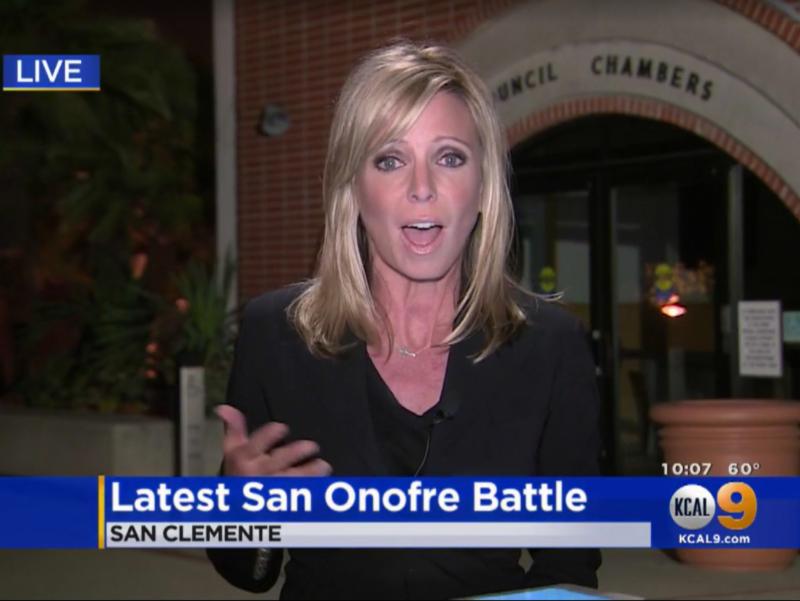Tuesday night was a major milestone in the long road ahead, even though the city council decided to do more wordsmithing on their letter to the California Coastal Commission. A vote on the final draft will be taken at their next
meeting
. Hopefully all of those wonderful people in the audience that took the time to show up and even speak up, will come back and bring others with them on
Tuesday, May 2.
A heartfelt THANKS to all of you who made such an impact!
That is how change happens.
Here is the brief story from Stacey Butler with CBS News - Los Angeles

Councilmember, Tim Brown, said he was concerned about the council being able to address the technical complexities of nuclear waste, challenging some of the text written by Councilmember Donchak. When I had my turn to speak, I offered a simple solution. Use the technical reasoning that had already been established in the conditional approval.
"Just tell the Coastal Commission to take the conditions that they put 20 years out and move them up to today where they belong,"
It is a logical and reasonable expectation that everyone can understand. I just wish I had taken the time to expand on it a bit to explain what those conditions were.
Most people would be astonished to know that this is not already the case. The fact that the Coastal Commission gave them 20 years to meet these requirements is even more astounding.
This seems to be the easiest and most obvious argument for rescinding the permit. It should never have been granted in the first place. It also reveals just how much pressure the Coastal Commission was under to give Edison what they wanted, regardless of how absurd it was.
In 20 years, Edison may have met their legal obligations, but may have also left us on our own to deal with leaking canisters that can't be moved.
If you don't think the thin canisters can crack,
just listen to the guy who makes them!
Over the years, Edison has quadrupled the number of fuel assemblies that the pools were originally designed to hold because it was cheaper to do so.
They had only been taking it out of the pools to make enough room for new fuel coming in from the reactors so they could continue operating.
This seems to undermine the sense of urgency that some people claim is needed now. How can they disband the specialized fire department on site, eliminate any responsibility for emergency response off site, and then tell us that we are in eminent danger if we don't rush to empty the pools because they are so much more dangerous than dry cask storage?
We should have been using the best canisters from the beginning. There are thick canisters available now, with double lids and instrumentation making it possible for them to be
inspected, repaired, maintained, monitored and transported without cracks.
If Edison gets their way, each thin canister will be loaded with even more hot fuel assemblies, making them more susceptible to cracking and will take much longer to cool enough for transportation.
Edison seems to only have one goal in mind, to get this waste buried and forgotten as soon as possible. We can't let that happen!
What I have learned from my own experience from dealing with Edison in the past is that if they want something badly, it is probably bad for us. Remember, these are the same guys that wanted to restart a defective nuclear reactor without fixing it first, to avoid being inactive for one full year which would require them to go through the entire relicensing process. Fortunately for us, they never made that deadline and chose to shutdown for economic reasons.
Our safety has never been their top priority and we have to accept that fact when dealing with them.
They are telling us what we want to hear, so it is being well received by many, but we must be aware of their motives. Of course we all want this dangerous material to be relocated as soon as it is safe to do so. It is easy for them to say they can start moving it in five years and be done in twenty. If that doesn't happen, what have they got to lose?
But what we have at stake, is getting stuck with leaking canisters buried on our shoreline that will be impossible to move.
Our goals are to:
1) Stop the work in progress.
2) Get an independent panel of nuclear experts to advise us on the best way forward.
3) Take the necessary steps to make us as safe as possible while the waste is here.
4) Make sure that waste can be
safely transported and stored at a suitable location.
5) Get it the heck out of here as soon and as safely as possible!